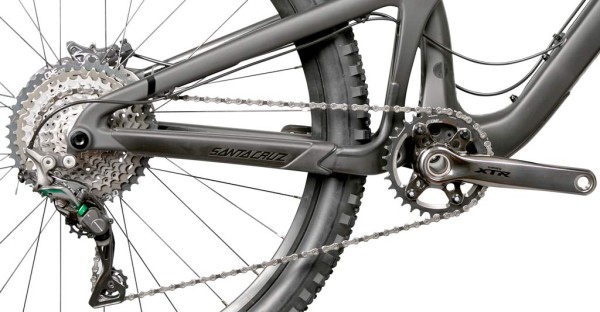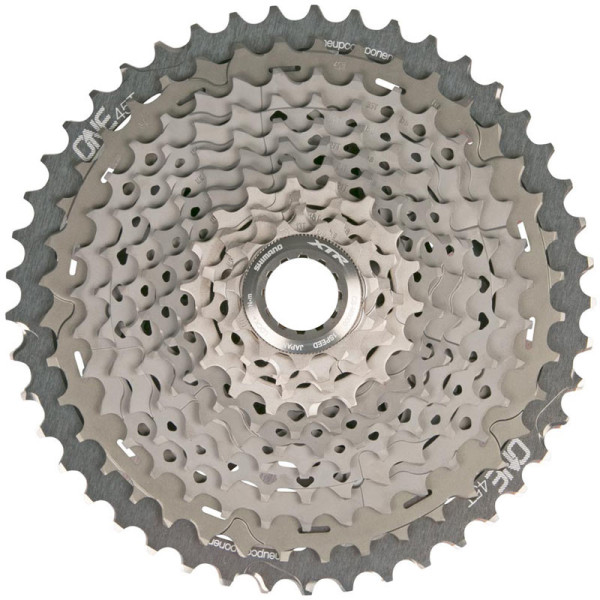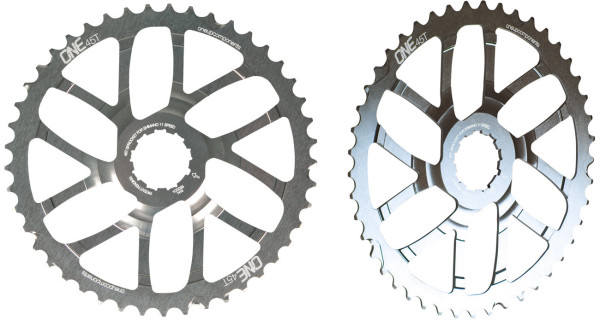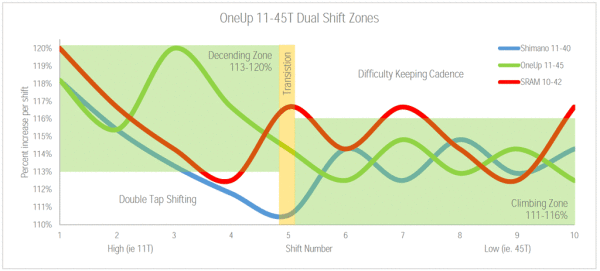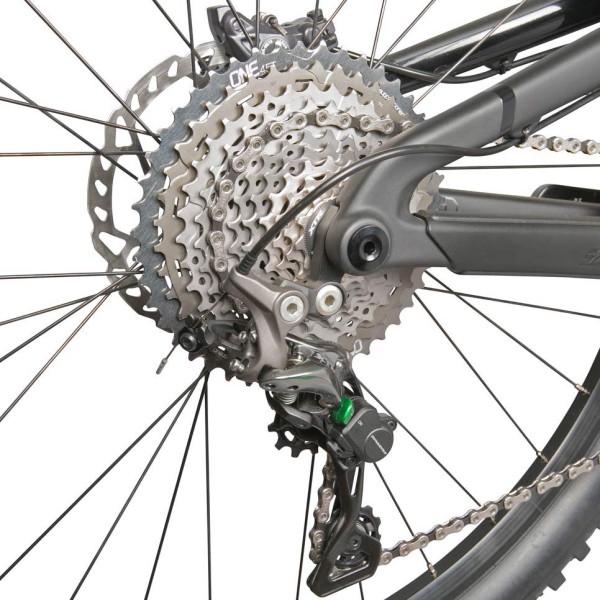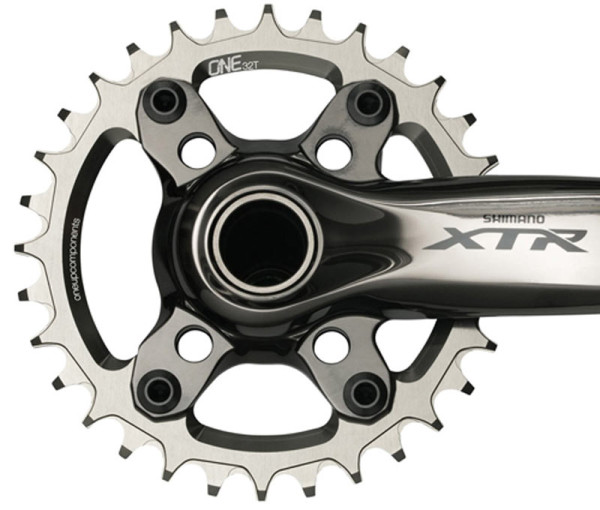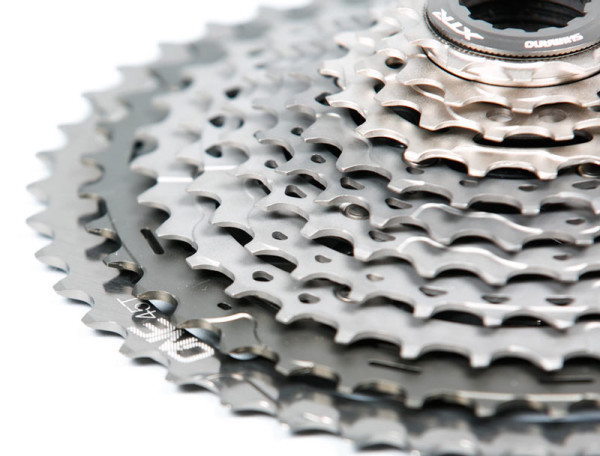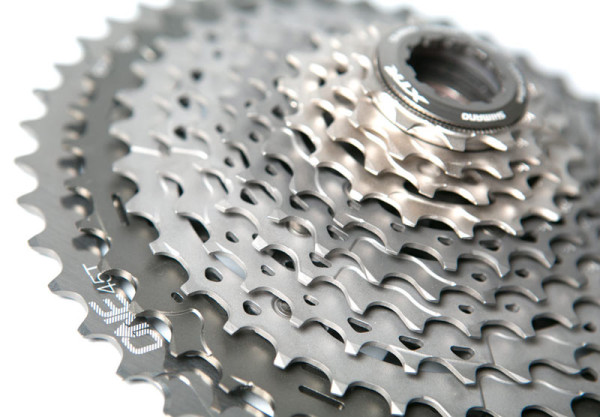If you thought their 44T cog for SRAM’s cassettes was big, OneUp Components has pushed oversized cassette cog adapters to the next level with a 45-tooth cog for the new Shimano XTR M9000 and XT M8000 groups.
Designed specifically for extending the range of their 11-40 cassettes on a 1×11 system, the cog slides in behind the standard cassette, keeping the stock 40-tooth alloy cog to smooth the transition. Room is made by pulling the 17 and 19 tooth sprockets and using OneUp’s 18-tooth cog in their place. The result is a claimed 12.5% increase in total range while only adding 65g over a stock XTR cassette.
They say this lets you bump the front chainring from 30T all the way up to 34T without losing any low end range for climbing…or keep the smaller ring up front and make it easier to get up the hills…
Retail is $90 for the 7075-T6 alloy 45T and hardened steel 18T cogs.
The parts can only be used on the new Shimano 11-speed mountain bike groups, and only with a 1×11. OneUp says the Shimano derailleurs don’t have the capacity to add this size cog with a double chainring up front. But, they won’t require much B-screw adjustment either, saying it’s well within the normal operating range of the derailleur to accommodate this cog.
The revised layout lets them divide the cassette into two ranges, a Descending Zone and Climbing Zone. In theory, this keeps the cadence between shifts along the lines of Shimano’s Rhythm and Step concept in the gears where you’re typically seated, pedaling away on the rollers and climbs. Changes are between 13% and 15% per gear between the 21 and 45 tooth cogs.
In the descending zone of 11 to 18 tooth cogs, the gap grows to 15%-20%, reducing the need to double shift when trying to make up ground on the downhills.
It’s color matched to the new XTR gray.
Of course, they’d love you to pair this new cassette kit with one of their XTR M9000 narrow-wide chainrings. Conveniently, these save 65g over a stock Shimano 1x chainring by removing the bolt cover plates, putting the threads directly into the ring and other design changes. And, with a $95 price savings over a replacement Shimano XTR chainring, it’s wash if you’re needing to replace the chainring anyway.
In other news, they were recently awarded a U.S. patent for their cassette adapter, with one the key design elements being the protrusions that allow the larger cog to be properly spaced from the next smaller cog. Here’s what OneUp’s Jon Hadfield had to say about it:
We’re stoked to have been awarded a patent for our expander sprocket design. However, we don’t feel that it is particularly news worthy. Shimano, SRAM, Race Face, Hope, E-13 and Wolftooth all have patents or patent applications for various designs. Not taking the necessary steps to protect our own ideas puts us in the unfavourable position of having our unique designs duplicated while our much larger competitors block us from their novel concepts.
So what’s to come of competing designs from others? Word on the street is they’re talking to other brands about licensing the design if there are infringements.
